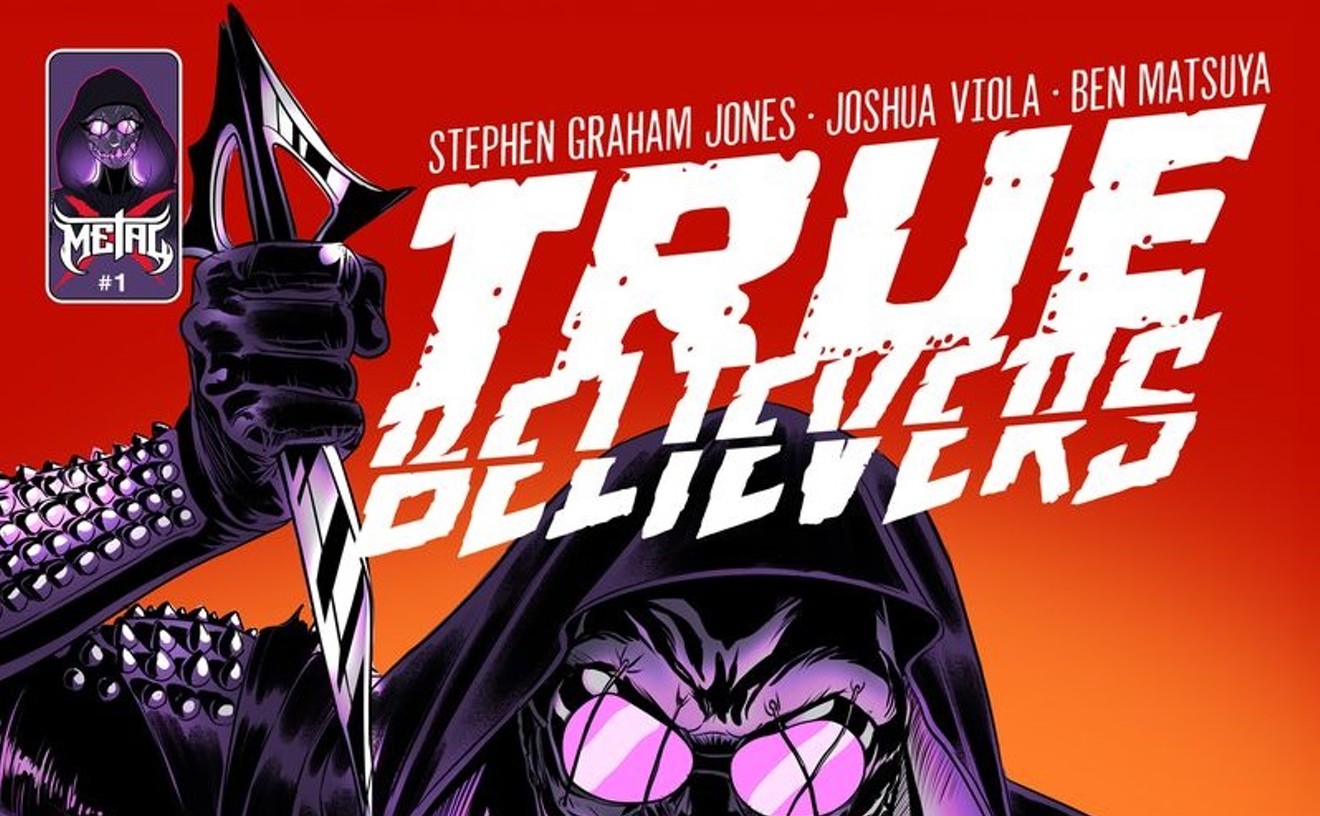Inkfish director Paul Hughes says this is the fourth time the gallery has presented Barbero in a solo show since 1981. "When he first approached us about a show" back in the early 1980s, Hughes recalls, "we liked the work, but we weren't sure his kind of paintings fit the [modernist] spirit of the gallery. Soon, though, we realized that Barbero's work was essentially abstract, and not traditional."
At the time, Barbero was only a seasonal resident of Santa Fe, having maintained a home in his native Massachusetts, where he was born in 1938. In the late 1950s and early 1960s he studied painting at the Boston Museum of the Fine Arts School, as well as Yale University and Tufts University, where he later taught. New England was then one of the last bastions of representational imagery in an art world gone abstract nearly everywhere else. And Barbero was completely out of step with the national vanguard of the 1960s, creating simple pastel drawings of scenes from nature while other artists were pushing the edge of the stylistic envelope.
Barbero made his first trip to New Mexico in 1975 and returned annually until permanently relocating there in 1983. And in the 1980s Barbero's presumably dated approach suddenly became the latest thing. Neo-expressionism brought back an emphasis on recognizable subject matter. There was also a revival of interest in the early modern artists who had worked in New Mexico and influenced so many Southwestern painters.
Barbero's paintings fit these two art trends perfectly. His cartoonish drafting, in which landscapes are rendered via thick and clunky lines, gives his work both a naive quality and an air of sophistication. That same unlikely combination marks Barbero's aesthetic ancestors in New Mexico. His work recalls the modernists of the 1920s and 1930s, including Stuart Davis, John Marin, Marsden Hartley and, especially, Georgia O'Keeffe. Those artists and lesser-known peers such as B.J.O. Nordfeldt and Ward Lockwood simplified the landscape into an arrangement of geometric and organic lines filled in with strong, brilliant colors.
The exhibit at Inkfish focuses on several of Barbero's smaller, easel-sized landscapes. In "Red Buttes," an acrylic on canvas done last year, Barbero uses loose, gestural strokes to create a dramatic and sculptural mesa. The painting is predominantly red, but it's a fiery shade, not the earthy tint that would be more true to life. The sky in the background is also an unnatural color--creamy pink, with wisps of deep-purple clouds. Barbero's color schemes hark back to his New Mexican forbears and their sources in the European avant-garde, who believed that color should be as much a measure of raw emotion as it is a reflection of the natural world.
"Red Buttes" is a rare example of Barbero using an essentially monochromatic palette. Typically, he mixes it up, setting "hot" colors like red and yellow against "cool" shades such as blue and green. In "Hopi Point," an oil on canvas, Barbero fills the center to overflowing with a simple depiction of mountains executed in red and orange. The foreground is mostly green and blue, the background bright-blue and yellow. This rhythm of dark to light inevitably leads the viewer's eye from the bottom of the picture to the top.
Barbero uses the same device in the painting "Two Buttes" and its preparatory watercolor, "Canyonlands." Here the purple wedge of a hill cuts into the right corner, casting a linear, horizontal shadow across the bottom. The sky at the top is a brilliant blue-white. Once again, the viewer's gaze invariably darts from bottom to top.
But Barbero is no formula painter, and a wide variety of other approaches are seen at Inkfish. In some, the dark-to-light progression is inverted or completely ignored. The acrylic on canvas "West Mesa," for example, stacks colors with the darkest element at the center; a purple horizontal stripe suggests a village or town. "West Mesa" also differs from several of the other landscapes in the simplicity with which the scene has been rendered. Following in the same vein is "2 Buttes," which is little more than a geometric abstraction. Sketchy triangles and rectangles stand in for the topographic features, and only in the context of the show's other paintings can it be read as a landscape. Even more abstract is "Diablo Canyon," a monotype with all the detail of a finger painting.
Barbero's move toward abstraction is best shown in his "Puertas," the Spanish word for "doors." Barbero has written that it was the "passageways of Mexico" that inspired him to launch the series, and in this case they've led him to dispense with all but the most rudimentary and suggestive details. The paintings from the "Puertas" series contain simple arrangements of rectangles; hard-edged vertical shapes suggest the doors and sometimes windows, while horizontal shapes define the walls.
While Barbero's landscapes have a sense of the three-dimensionality of space, the "Puertas" are flat, their doors shut and lying hard against the walls. The colors are applied evenly, with no mottling to suggest shadows. In "Puertas II," two evenly spaced doors, one purple, one red, alternately stand out and recede against the two-tone red field of the background wall.
The "Puertas" seemingly represent a transitional phase for Barbero, one that the artist has not fully mastered. But not to worry. As gallery director Hughes points out, the transplanted New Mexican's many avid followers "will not let him give up the landscape."
Contemporary landscapes are also the subject of a single-artist show at CSK Gallery. Kate Leonard: Land Forms displays expressionist and conventionalized landscapes from the Colorado Springs painter's "Land Forms" series. Like the Barbero paintings and monotypes at Inkfish, Leonard's pieces are small in size. But there the similarities end. Instead of dazzling colors, Leonard prefers murky shades. And instead of hard-edged lines, she keeps the margins between her forms blurry.
Leonard is only a few years out of school at Iowa's Grinnell College and the University of Nebraska. But she has already stacked up some considerable credentials. Even during her school days, her work was collected by several small Midwestern museums, and immediately upon graduation, she was offered a job as assistant professor of art at Colorado College. The twenty-something painter and printmaker's latest triumph: a 1997 MacArthur Fellowship.
At CSK, where Leonard last year conducted workshops in the gallery's graphic atelier, the artist is represented by oil paintings in dark colors. (A variety of Leonard's prints are available for viewing in CSK's back room.) The paintings ostensibly depict the land and sky, but Leonard has pointedly blurred the forms; one smudgy stroke leads to the next in the manner of abstract expressionism. The results are indistinct and dimly glimpsed landscapes that have an almost dreamlike feel.
There's a surrealist flavor to Leonard's dusky views, but in the end she remains a rightful heir to the nineteenth-century academic landscape tradition. Indeed, her work falls easily within the traditional-realist camp that's been all the rage during the last few years. There is, however, a quirkiness to these "Land Forms"--absolutely nothing seems to be happening in them, and we can't make out any of the details. Like Barbero's, Leonard's paintings and prints are hybrids of old-fashioned landscapes and newfangled abstracts. It's a mixed marriage, but a happy one.
David Barbero: Landscapes and Puertas, through February 28 at Inkfish Gallery, 116 South Broadway, 715-9528.
Kate Leonard: Land Forms, through March 9 at CSK Gallery, 1637 Wazee Street, 436-9236.










